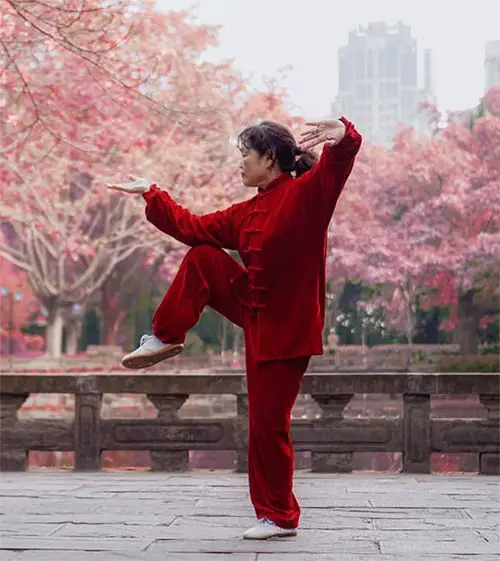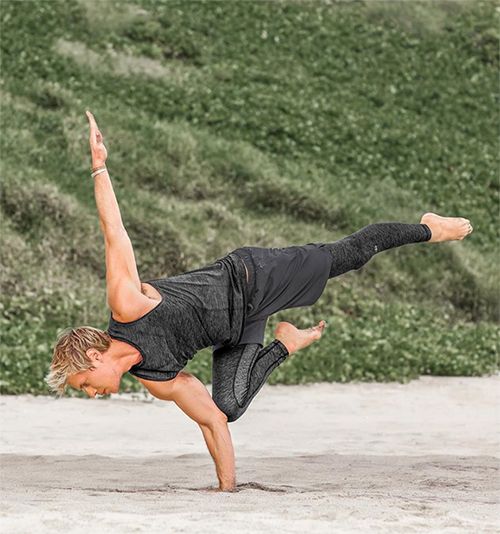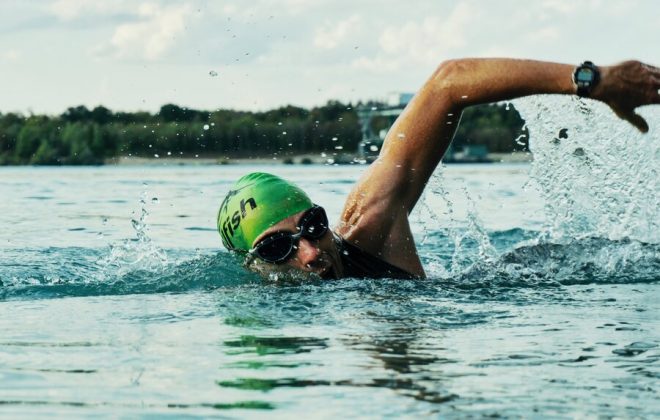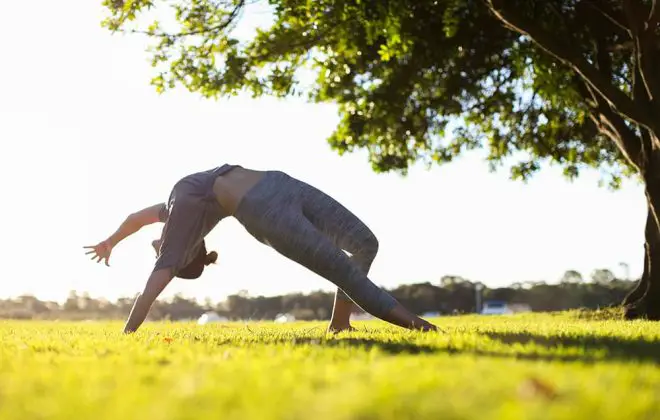How To Get Started With Meditation – 8 Helpful Tips For Beginners
Meditation is a great way to improve focus, as well as develop mental strength and resilience. However, the process of clearing the mind and organizing thoughts doesn’t come naturally to most people. That can be quite discouraging, so in this post I’ll share some tips from my experience on how to get started with meditation.
Back in my teens I really struggled with keeping myself together. That resulted in a lot of stress and impacted my athletic results as well. My recovery was poor, I was suffering from minor illnesses on a frequent basis and I couldn’t overcome doubts during competitions.
As a remedy, my sports doctor suggested I try meditation – that was one of the best pieces of advice I got. Not only in training, but in life as well.
Over time meditation helped me build resilience as an athlete, as well as ‘calm my nerves’ and improve the ability to focus. Much like with everything else in life – of course – mindfulness didn’t come in a blink of an eye for me. It didn’t also happen spontaneously after I took a break and traveled around the world.
Learning to let go, becoming more mindful, happy and fulfilled required making gradual changes to perspective, attitude, self-control and even world view. It was about pushing myself to take a step in the right direction and resisting things that distract into going in the wrong one.
And that’s where consistent meditation practice was very helpful for me.
How to get started with meditation
Mindfulness is not something one achieves only after spending a year in a monastery or traveling around Asia in an attempt to understand Buddhism.
No, being mindful simply means controlling what you put attention to and staying with it. Meditation trains exactly that ability.
Meditation is simply a practice of controlling what the mind focuses on and not letting anything break that focus.
There are various meditation techniques to choose from – both guided and unguided. Mindfulness and awareness practice, visualization, meditation on mantras, repeating prayers, Zen and many more. People can choose whatever speaks up to them.
Ultimately, it doesn’t matter which meditation technique to use – all of them are effective at training the mind to focus. What matters is that people select the right technique for them – the one which they can be consistent with. That will help to stick with the practice and transfer the feelings experienced (like being calm, mindful or focused) into daily life.
Scroll down for tips on how to get started with meditation and develop a consistent practice.

Meditation tip #1 – Start small
Starting small is a great way to build habits that last. As little as 2-3 minutes of active meditation every day is much better at building a consistent practice than 20 minutes every couple of weeks.
In fact, at first it will be very hard to focus on quieting down the chatter for more than a couple of moments. So, spending just several minutes in active focus (on the breath or repeating a mantra) is a great way how to get started with meditation.
So, do that – meditate for just two minutes and try to do it every day for a week. Or better yet – a month. If that goes well, increase that time gradually to 5 and then 10 minutes. It doesn’t take away much from the day, so set a daily reminder and just do it.
Stress-relieving benefits of meditation can be felt right away. However, one can only appreciate long term effects from consistent practice as the time passes.

The Resilient Athlete
A Self-Coaching Guide to Next Level Performance in Sports & Life
Are you aiming to become a resilient athlete who is able to withstand any pressure? Be able to jump on any opportunity? Take any challenge life throws at you head on?
Then this book is for you.
Learn moreMeditation tip #2 – Remove distractions
Meditation can seem quite hard at first, as we have thousands of thoughts rushing through our heads every day. Things to buy, people to call, appointments to attend – all of that takes up precious real estate in our heads.
Especially in the beginning – when a person learns to control attention – it’s very easy to get side-tracked by something minor, like a message notification or noise from the street. Which is why it’s best to minimize potential distractions as much as possible during meditation practice.
Sit in a quiet place or put on noise-cancelling headphones. Remove visible clutter and keep meditation place simple and tidy. Close the door. Switch off the phone.
Read also: Top 5 Game-Changing Benefits Of Meditation For Athletes
Meditation tip #3 – Find time for yourself every day
Another advice I can give is to set a dedicated time every day to practice meditation. It can be as little as a couple of minutes at first – and that’s ok. The most important thing is to do it daily, because that’s what helps to build a habit.
Every person has to spend at least an hour every day with himself
Dalai Lama
Spending time with yourself means no music, TV, devices or social media. Nothing. Just you facing your thoughts.
I found that the best way to get something done is to do it first thing in the morning. The earlier the better. That’s when we’re fully rested and our willpower & energy are at their fullest. Another great thing about early mornings is that everyone is asleep and there is nobody there to bother us.
Meditation tip #4 – Use training practice as meditation
For athletes one of the great way how to get started with meditation is to integrate it into some of their training sessions. Endurance athletes in particular spend a lot of time doing repetitive motions (running, cycling, kayaking, etc.) which is a great opportunity to practice controlling what the mind focuses on.
Take the time during a training session (or devote a full session to it) to focus on the form & breathing, stay present in the moment and recognize surroundings. It’s best not to listen to music during these sessions. That will only distract from the practice of controlling attention.
I noticed that going for a run after work can help my mind calm down. After 15-20 minutes of easy unstructured exercise I feel my mind stops racing and I feel less stressed.
Another great option is to try out Yoga, Qigong or other mind-body exercises. These practices combine a form of exercise, breathing techniques, mental focus and balance, which challenges mental capacity in various ways and helps to strengthen it.


Meditation tip #5 – Focus on how you feel
Scientists estimate that our brain thinks between 60,000 and 80,000 thoughts every day. Most of these, however, are either useless (random words that fly through our head) or repetitive. In fact, we spend most of our attention thinking about the past or planning what we’ll do in the future.
Which is why many people find mindfulness meditation to be very effective. It’s the process of bringing thoughts to the present moment, actively focusing on the body and distancing oneself from what is happening around.
Scan the body from head to toes to recognize how you feel. Mentally note down things that distract you. Recognize and appreciate where you are and what surrounds you.
Read also: 19 Strategies For Athletes To Reduce Mental Stress & Improve Recovery
Meditation tip #6 – Focus on the conscious breathing
A great way how to get started with meditation is to simply focus on the process of breathing.
Try to focus on the feeling of the chest moving up & down and resist the temptation of thinking of something else. Imagine how the body fills up with oxygen & energy during inhalation and how all muscles relax during exhalation.
I found it effective to count your breaths to help maintain the focus at first. Count 1 on inhale and 2 on exhale.
Meditation tip #7 – Use an app or try other guided meditation
Another great way how to get started with meditation is to follow someone else’s lead. Guided meditation is exactly what it sounds like – you listen to someone’s voice guiding you through the practice. While it sounds silly, it’s extremely effective for beginners to learn various techniques and feel the effect.
There are various options for guided meditations – from classes and private tutoring to apps and games. Personally, what helped me understand the purpose of meditation and get into a habit of practicing it was the Headspace app.
My biggest streak on Headspace was 4 months of meditating for at least 10 minutes every day. That was when I noticed that when I’m doing something (work, training, blogging) I am able to fight distractions and focus for extended amount of time better.
The app can be an easy-to-understand and ‘gamified’ way of learning the skill and creating a consistent practice. Take a look at how Headspace explains the value of changing perspectives, for instance:
Meditation tip #8 – Remember that it’s not about stopping thoughts
It’s healthy to remember that the goal of meditation is not to clear the mind from thoughts and have a ‘blank canvas’. In fact, it’s nearly impossible to do so.
The purpose of meditation is to recognize when the mind has wandered. From there it’s all about having the mental strength to let go of the distraction that captured our attention and bring the mind back to whatever we were focusing on. Each time we succeed at this we improve the skill and it gets easier to notice and manage distractions in the future.
It’s not uncommon at first to be able to go only 5 seconds until the mind wanders off.
When the mind gets distracted what matters is whether a person follows that distraction or has the ability to recognize and stop it.
That means, even if during the meditation practice a person spends 9 out of 10 minutes thinking about what he’ll eat for lunch but in the last minute recognizes that and comes back to being focused on the breathing – the practice was successful. That person just took control over his mind and guided it in the direction he wanted.
Did you find this information useful? Share the post with others using the buttons below.
Tags In
Andrejs
Related Posts
6 Comments
Leave a Reply Cancel reply
GET A FREE TRAINING PLAN
Subscribe to my email list and get access to a free 4-week “back in shape” training plan
You’ll also get two full-body strength sessions and some other goodies!

How did I get here?
Hey there! My name is Andrejs and I am here to inspire, entertain and get you fit for any adventure.
I went from being an over trained pro athlete to an endurance coach sharing how to listen to your body and live life to the fullest.
Traveling, new sports & activities brought new meaning to my training and made it much more effective, fun and enjoyable. And I'm here to help you do the same.



Great post! It’s very difficult to focus. I can”t concentrate. Any inputs?
Hi Kratika! My best tip is to just try and stick with it – preferably daily. It can be awkward and difficult at first, but over time you’ll notice the mind gets clearer
Oh, okay. That’s what I don’t incorporate – regularity. Will try it now. Thanks.
I like how you mentioned that it is helpful to take notes about the things that distract you. My cousin mentioned to me that he is planning to have a meditation coaching program as he wants to focus on the things he needs to grow and asked if I have any idea what is the best option to do. Thanks to this informative article and I’ll be sure to tell him that he consult a well-known meditation coaching program as they can help him with all his concerns.
I thought it was interesting how you pointed out that endurance athletes have a great opportunity to practice meditation. I’ve been wondering where I can look to incorporate my meditation in my daily life. I do like to run a few miles in the morning to start my day, so I’ll have to try using it here and see how it works for me.
Sounds like a great plan! Good luck!